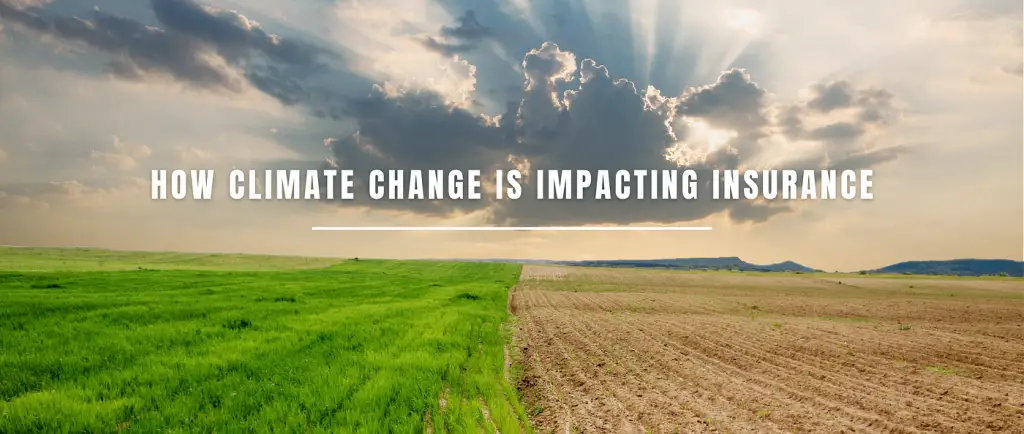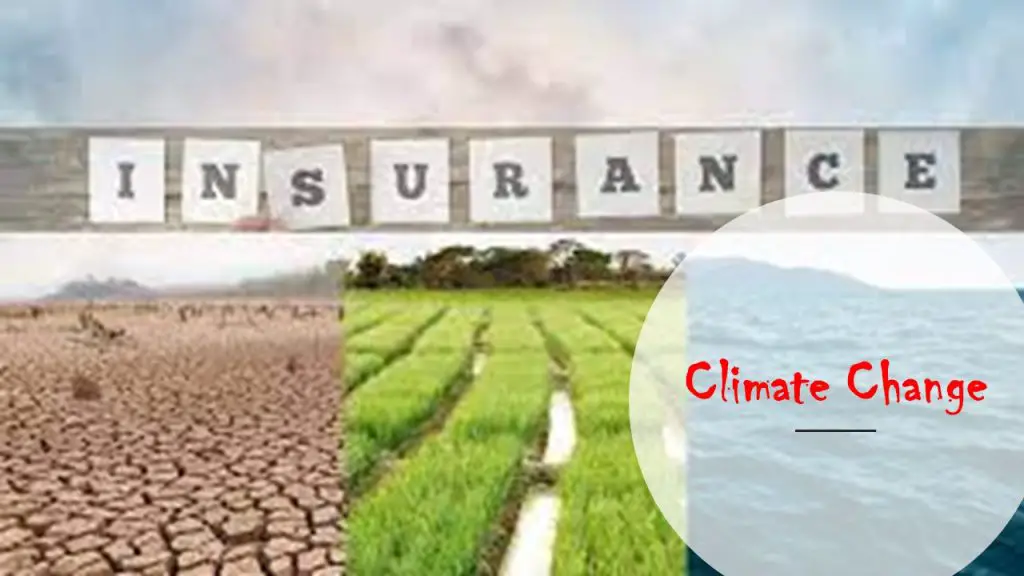Introduction
Greetings readers. I hope this finding reaches you well and in good health. As climate change continues to profoundly reshape our planet, it is imperative that we thoughtfully consider both its effects as well as our role in mitigating further disruption. One area that demands careful consideration is how climate change will influence property and casualty insurance, as extreme weather and rising seas threaten communities while insurance costs climb in response.
In this post, I aim to respectfully examine climate change‘s growing impact on property and casualty coverage. Through exploring emerging research and risks, we can gain a fuller picture of both ongoing challenges as well as opportunities to bolster resiliency. My goal is thoughtful discussion of this complex issue, with care for all affected. Please feel invited to engage thoughtfully in the comments on how we might work to ensure affordable, equitable insurance in a warming world.
Property and casualty insurance protects individuals and businesses against risks of property loss or legal liability from accidents. It covers homes, automobiles, liability, and other property or assets. Changing climate patterns directly impact the frequency and severity of risks property and casualty insurers cover such as hurricanes, wildfires, extreme rainfall and flooding. This is a major issue as it threatens access to affordable coverage, especially in high-risk climate vulnerable areas.
According to the IPCC’s latest report, it is “unequivocal that human influence has warmed the atmosphere, ocean and land.” This warming is intensifying the water cycle and increasing the frequency, severity and costs of extreme weather events like wildfires, hurricanes, heatwaves and flooding. The National Climate Assessment finds climate change is “transforming where and how we live and presents growing challenges to human health and quality of life, the economy, and the natural systems that support us.” As risks rise, so do the costs of property damage which homeowners and business owners depend on insurance to cover.
This leaves insurers in a difficult position. They need to continue to provide coverage even as climate impacts make some areas increasingly unsafe and expensive to insure. At the same time, rising costs mean insurance may become unaffordable for many without premium increases. With climate impacts projected to continue worsening if emissions are not steeply reduced, this poses a long term challenge both socially and financially for insurers and policyholders alike. In high risk flood zones, coastal and wildfire areas, “insurance may become harder to get and more expensive to keep.”
In this post I will examine in more detail:
- How climate change is increasing risks insurers cover like hurricanes, wildfires, flooding and more
- Projections on how climate impacts could affect insurance costs if risks are allowed to continue mounting
- Challenges to insurers and policyholders in high-risk areas from growing affordability and availability issues
- Steps insurers and governments are taking to help communities build resilience and help ensure continued coverage
- Discussion of balancing insurer/policyholder needs with sustainability as climate impacts intensify long term risks
I hope this overview provides helpful context as we explore these issues further and discuss solutions to balance concerns of all affected by this complex challenge. Please feel encouraged to pose questions or share your perspective in the comments.
Growing Climate Risks and Insurance Costs
Extreme Weather Events
Climate change is intensifying extreme weather events that are the primary driver of insurance losses. Researchers have found human-caused warming made some recent hurricanes, rainstorms and heatwaves globally more severe. Warmer oceans fuel more powerful hurricanes and typhoons, while rising temperatures lead to heavier downpours and more frequent and intense heatwaves on land as the atmosphere holds more moisture.
For example, analysis finds hurricanes Harvey, Florence and Maria in 2017 would have dropped significantly less rain without human-caused climate change. This research implies some storms may have caused little damage in the past but now wreak devastation due to warming. More extreme rainfall is also making flooding more frequent and damaging, as seen by “500-year floods” now occurring regularly in many areas.
These trends will only grow worse as climate change continues. While not every storm can be directly attributed to warming, higher sea surface temperatures and atmospheric moisture levels essentially “load the weather dice” to make damaging events more severe and likely to occur. In the future, studies project Atlantic hurricanes could become up to 20% stronger and wetter due to climate change, increasing wind and storm surge damages. Other regions will face their own escalating climate-driven extreme weather risks.
This poses major challenges for insurers, as property losses from natural disasters are already climbing steeply. By some estimates, annual insured losses from weather events have increased by over 150% in North America since 1980 when adjusted for population growth and wealth. Globally, insured catastrophe losses averaged over $50 billion per year over the past decade, more than double the average from the 1980s and 1990s according to Swiss Re.
The rise in extreme weather costs is a direct threat to insurance affordability. In the U.S., annual insurance premiums have increased by over 50 percent on average in coastal counties over the past 15 years or so, driven primarily by the growing risk of hurricanes and flooding according to Moody’s Investors Service. This places coverage out of reach for many.
Rising Seas
Coastal flooding and erosion due to sea level rise are projected to hugely damage property and infrastructure in coming decades without action to cut emissions. Some estimates find 5-10% of currently inhabited U.S. coastal land could be below sea level or flooded regularly by 2100 without significant reduction in emissions.
Rising oceans will also push saltwater further inland in many areas, contaminating groundwater and worsening floods caused by even moderate storms and high tides. Prolonged inland freshwater flooding from stronger storms interacting with higher seas can cause catastrophic damage, as seen with 2012’s Hurricane Sandy in New York.
Coastal homeowners face increasing risks and insurance challenges. properties further inland will also face growing threats. In one Florida county, for example, over 40,000 properties are at risk of chronic flooding by 2045 according to a Union of Concerned Scientists analysis.
With worsening climate impacts already unfolding, risks will escalate rapidly for many shoreline communities in the coming decades, increasing costs for rebuilding and coastal infrastructure projects. This poses profound social and financial challenges to ensure stable insurance markets that do not leave vulnerable residents stranded without coverage or resources to adapt in the face of inevitable changes. Affordability and availability concerns will grow as risks rise given the huge costs involved.

Other Weather Phenomena
In addition to hurricanes and sea level rise risks, changing climate patterns are increasing other weather phenomena driving insurance costs:
- Wildfires: The Western U.S. and other fire-prone regions have seen a dramatic rise in large, intense wildfires due in large part to drier conditions from climate change. Some studies find western U.S. wildfire seasons have increased by over 100 days since the 1970s. Billion dollar annual wildfire costs are projected to escalate in coming decades.
- Drought: Drier conditions fuel wildfires and pose risks to agriculture, while water scarcity challenges communities and ecosystems. Drought also increases the risk of land subsidence which can damage buildings and infrastructure.
- Extreme Heat: Rising temperatures increase risks of heat stroke, exacerbate air pollution problems, overburden energy grids and damage crops. Insurers are starting to offer “excess heat” policies and expect more claims for heat-related illnesses.
- Stronger Tornadoes: Some research indicates climate change may be enhancing conditions for more tornadoes in tornado alley and higher wind speeds, leading to greater building losses. However, the science is less conclusive than for other climate-related weather trends.
These intersecting climate impacts increase risks across personal home, commercial property/casualty and life/health insurance sectors. With changing climate conditions accelerating property damage worldwide, the costs are projected to rise dramatically for insurers and policyholders alike if emissions are not urgently reduced according to multiple studies. This poses profound social justice and economic implications that demand consideration and collaborative solutions.
Affordability and Availability Challenges
As climate costs escalate, maintaining insurance market stability and equitable access to coverage are increasingly complex challenges facing policymakers. In coastal and wildfire-vulnerable communities, insurers are already pulling back or non-renewing policies due to rising risks.
For example, Florida currently has over 1.7 million individual property insurance policies in its state windstorm program due to limited private market availability and affordability issues, costing billions annually. Residents in high risk flood zones likewise struggle with soaring or unavailable policies. Disinvestment and rising rates price many long-time residents and communities out of insurance protection altogether according to some analyses, disproportionately impacting lower-income groups.
Premium spikes are also hitting homeowners further inland where development has increased exposure to climate threats like stronger hurricanes and more frequent flooding. Record setting wildfire seasons have driven California’s FAIR Plan (insurer of last resort) to increase rates by up to 40% according to some reports, limiting access. Regional differences in climate risks create growing inequities, as weather events concentrate losses unevenly in vulnerable locations.
FAQs
What is a digital mental health app?
A digital mental health app is a software application designed to be used on a mobile device like a smartphone or tablet to help support mental wellness and address conditions like anxiety, depression, insomnia, and more. These apps often provide self-help tools like mood tracking, relaxation exercises, cognitive behavioral therapy techniques, and help connect users to mental health professionals.
How can digital mental health apps help?
Many digital mental health apps aim to help in a few key ways:
- Provide coping strategies and exercises that can be done anywhere, on demand. Things like mindfulness meditations, relaxation techniques, thought challenges, and more.
- Allow for anonymous and private tracking of mood, stress levels, sleep quality, and other metrics to help identify personal triggers and patterns.
- Connect users with supportive communities of others also using the app to share experiences and support each other.
Are digital mental health apps effective?
While research is still being conducted on many individual apps, studies so far show digital mental health apps can be an effective supplement or alternative to traditional therapy for mild to moderate mental health conditions:
- A meta-analysis found apps incorporating CBT techniques reduced depression and anxiety symptoms significantly.
- Reviews show several anxiety and depression apps are as effective as face-to-face CBT for some people.
- Other research found certain mindfulness and meditation apps can reduce stress more than no app or active control conditions.
How do I know which app is right for me?
When choosing among the thousands of mental health apps available, consider these factors:
- Your specific goals – Do they match what the app is designed for like stress, insomnia, depression, etc.?
- Reviews – Look for high ratings and what real users say about effectiveness and features.
- Evidence – Check if the app’s approach and techniques are backed by scientific research.
- Customization – Look for personalized programs, progress tracking, community support.
- Cost – Many good options exist with no cost or low monthly fees. Avoid expensive upfront costs.
What are some highly rated mental health apps?
Some of the most popular and well-reviewed mental health apps include:
- Calm – Great for meditation and relaxation with sleep stories and music.
- What’s Up? – CBT-based app for anxiety and depression from Anthropic.
- Talkspace – Online therapy with licensed therapists through messaging.
- BetterHelp – Connects to a therapist for video or phone counseling sessions.
- Headspace – Meditation and mindfulness lessons from expert teachers.
Are there any concerns with digital mental health apps?
While digital apps aim to make care more accessible, some concerns include:
- Privacy and data security – Make sure any personal data is encrypted and only used as intended.
- Lack of personalization – One-size-fits-all programs may not work as well as customized care.
- App abandonment – Ensure continued benefit by using engagement strategies like communities.
- No human support – Cannot entirely replace in-person care and advice from trained professionals.
Conclusion
In conclusion, while not a replacement for traditional care in severe cases, digital mental health apps show promise as accessible supplemental tools for mild to moderate conditions when used appropriately. By combining evidence-based features like tracking, CBT exercises, and connection to counselors, the top apps empower users to take steps to improve their mental wellness each day. With so many options, evaluating reviews and credibility is important to find the best match for individual goals and needs. Apps have great potential to make care more convenient and reduce stigma globally.




Comments
I want to thank you for your assistance and this post. It’s been great.
How can I find out more about it?
Thanks for your help and for writing this post. It’s been great.